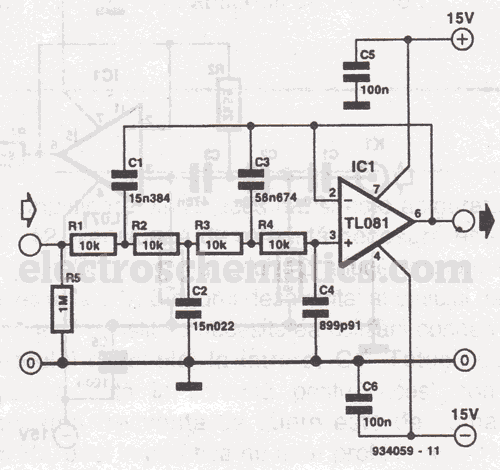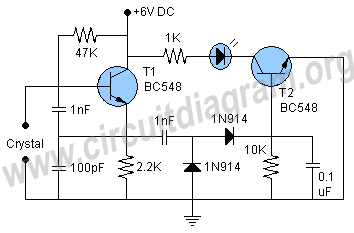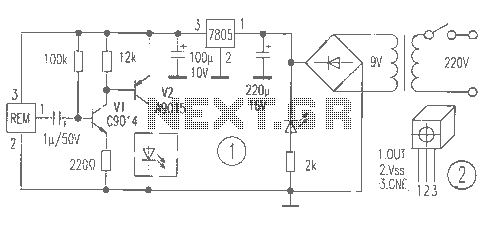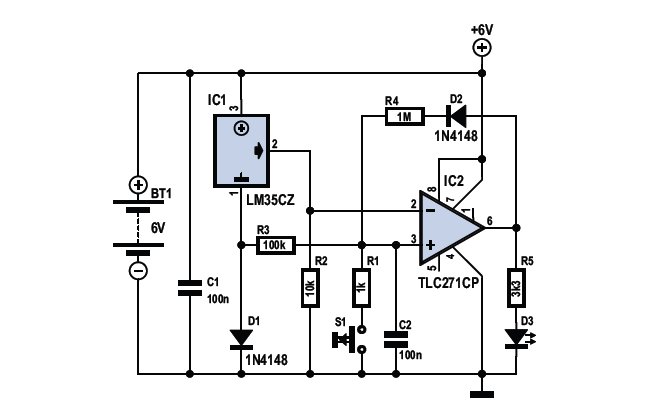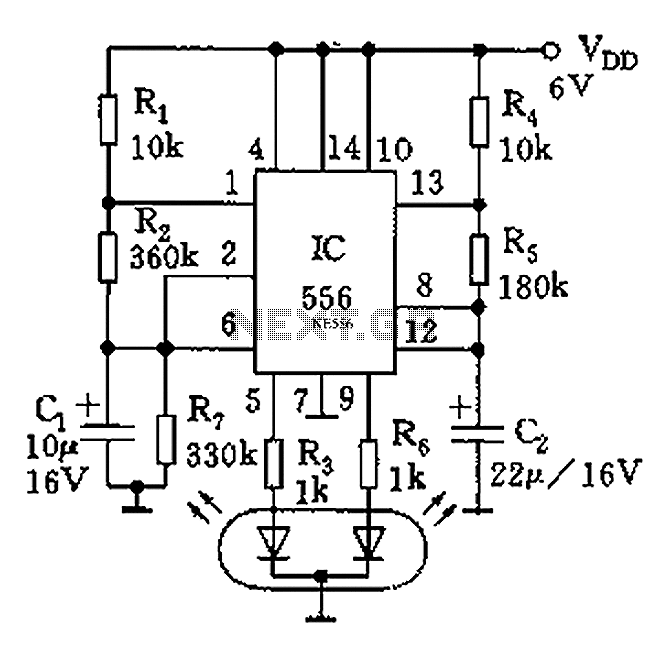
Audio Amplifier Circuit 15 Watts Class B
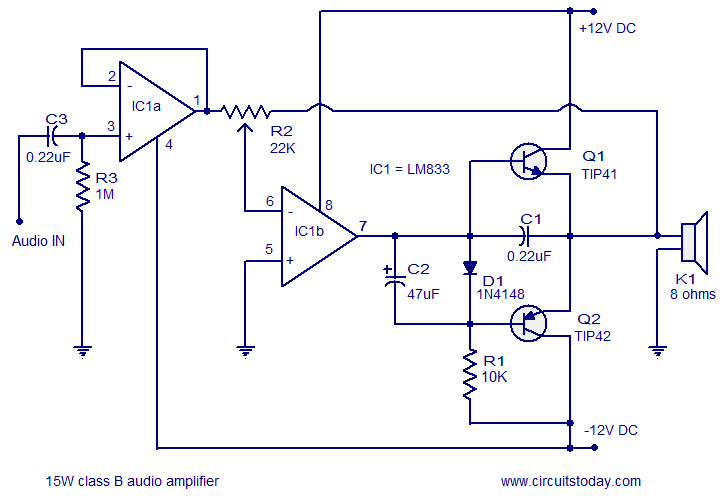
A 15 Watts Class B audio amplifier circuit is designed using a dual op-amp LM833. The schematic diagram is provided, and a potentiometer allows for volume control.
The 15 Watts Class B audio amplifier circuit utilizes the LM833 dual operational amplifier to achieve high fidelity audio amplification. The LM833 is known for its low noise and distortion characteristics, making it suitable for audio applications. The circuit typically includes a power supply section, input stage, gain stage, and output stage.
In the input stage, the audio signal is fed into the non-inverting input of the first op-amp. This stage may also include coupling capacitors to block any DC offset from the audio source. The gain of this stage can be adjusted using resistors configured in a feedback loop.
The potentiometer connected to the circuit serves as a volume control, allowing the user to adjust the amplitude of the input signal before it is amplified. This component is typically placed in series with the input signal path, ensuring that changes in resistance directly affect the signal level entering the amplifier.
The output stage of the amplifier is designed to drive a load, such as a speaker. It typically employs complementary push-pull transistors to achieve Class B operation, where each transistor conducts for half of the input signal cycle. This configuration allows for efficient operation and minimizes power dissipation.
The schematic diagram illustrates the connections between the LM833, the potentiometer, and the output transistors, providing a clear visual representation of the circuit layout. Proper decoupling capacitors are also included in the design to filter out any high-frequency noise and ensure stable operation of the op-amps.
Overall, this 15 Watts Class B audio amplifier circuit is an effective solution for driving speakers in various audio applications, providing a balance between performance and efficiency.15 Watts Class B Audio amplifier circuit. This 15W amplifier circuit is designed using a dual op-amp LM833. Diagram and Schematics are shown. Potentiometer enables volume control.. 🔗 External reference
The 15 Watts Class B audio amplifier circuit utilizes the LM833 dual operational amplifier to achieve high fidelity audio amplification. The LM833 is known for its low noise and distortion characteristics, making it suitable for audio applications. The circuit typically includes a power supply section, input stage, gain stage, and output stage.
In the input stage, the audio signal is fed into the non-inverting input of the first op-amp. This stage may also include coupling capacitors to block any DC offset from the audio source. The gain of this stage can be adjusted using resistors configured in a feedback loop.
The potentiometer connected to the circuit serves as a volume control, allowing the user to adjust the amplitude of the input signal before it is amplified. This component is typically placed in series with the input signal path, ensuring that changes in resistance directly affect the signal level entering the amplifier.
The output stage of the amplifier is designed to drive a load, such as a speaker. It typically employs complementary push-pull transistors to achieve Class B operation, where each transistor conducts for half of the input signal cycle. This configuration allows for efficient operation and minimizes power dissipation.
The schematic diagram illustrates the connections between the LM833, the potentiometer, and the output transistors, providing a clear visual representation of the circuit layout. Proper decoupling capacitors are also included in the design to filter out any high-frequency noise and ensure stable operation of the op-amps.
Overall, this 15 Watts Class B audio amplifier circuit is an effective solution for driving speakers in various audio applications, providing a balance between performance and efficiency.15 Watts Class B Audio amplifier circuit. This 15W amplifier circuit is designed using a dual op-amp LM833. Diagram and Schematics are shown. Potentiometer enables volume control.. 🔗 External reference
